House on Straw Hill Blu-ray Movie
HomeHouse on Straw Hill Blu-ray Movie 
Exposé / Trauma / Blu-ray + DVDSeverin Films | 1976 | 84 min | Rated R | Oct 08, 2013
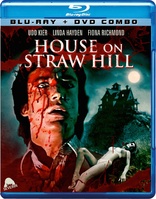
Movie rating
6.2 | / 10 |
Blu-ray rating
| Users | 4.5 | |
| Reviewer | 3.0 | |
| Overall | 3.0 |
Overview
House on Straw Hill (1976)
A paranoid writer is unable to get started on his second novel. He hires a secretary, and then his troubles really begin.
Starring: Udo Kier, Linda Hayden, Fiona Richmond, Patsy Smart, Karl HowmanDirector: James Kenelm Clarke
| Horror | Uncertain |
| Foreign | Uncertain |
| Thriller | Uncertain |
Specifications
Video
Video codec: MPEG-4 AVC
Video resolution: 1080p
Aspect ratio: 1.67:1
Original aspect ratio: 1.66:1
Audio
English: DTS-HD Master Audio Mono
Subtitles
None
Discs
25GB Blu-ray Disc
Three-disc set (1 BD, 2 DVDs)
DVD copy
Playback
Region free
Review
Rating summary
| Movie | 2.5 | |
| Video | 2.0 | |
| Audio | 3.5 | |
| Extras | 3.5 | |
| Overall | 3.0 |
House on Straw Hill Blu-ray Movie Review
Reviewed by Jeffrey Kauffman October 8, 2013It may strike our coarsened American sensibilities as downright funny, but in the late 1970s and (especially) early 1980s, the British were up in arms over what they termed (in that quaint English style) “video nasties”. With the advent of VCRs and home video viewing, a glut of questionable titles had arisen which shocked the supposedly delicate sensibilities of the British, or at least the British who were armed with power to make laws banning such fare. Two acronymed entities were at the forefront of this era, the BBFC, or British Board of Film Censorship (later the British Board of Film Classification) and the DPP, or Director of Public Prosecutions. Utilizing a then out of date law, individual constabularies raided video stores and made completely arbitrary decisions about which videotapes to seize for putative obscene content, which ultimately resulted in the DPP publishing a list of so-called “video nasties”, which of course made these supposedly “dangerous” films all the more alluring to a certain class of consumer. House on Straw Hill, which was released in various markets as Exposé and Trauma, was a 1976 low budget effort that has had a rather ignominious history, having suffered the slings and arrows of not only being outright banned, but of having had large snippets of it trimmed through the years in order to maintain what various censoring agencies have imposed as a sense of propriety. Now restored (a relative term, as will be discussed below) to its uncut version, House on Straw Hill will probably appeal to curious sorts who have long wondered what all the fuss was about, but even those guided by a perhaps prurient interest in the film may be remembering that adage from their youth, “the anticipation is greater than the realization”.
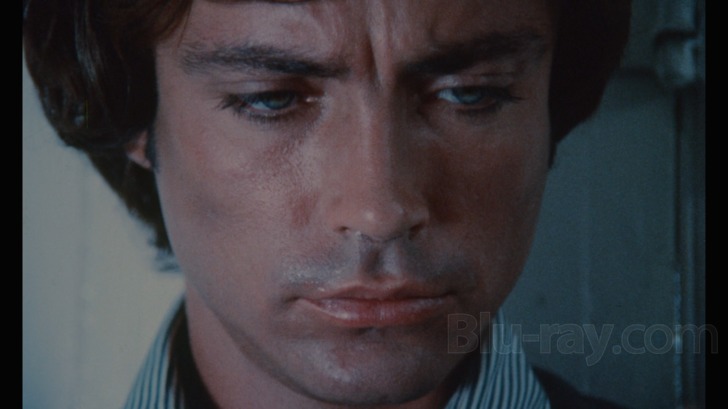
If one were to excise the more provocative elements of House on Straw Hill—some explicit sex scenes, including ones which are euphemistically termed “self gratification”, as well as some relatively gruesome deaths—one would be left with a fairly straightforward and effective psychological thriller. Author Paul Martin (a dubbed Udo Kier, Suspiria) is coming off the overwhelming success of his first novel but has encountered a bit of writer’s block in trying to churn out his sophomore effort. Even some kinky sex—replete with surgical latex gloves—with his beautiful girlfriend Suzanne (Fiona Richmond) can’t help, and in fact her presence may be a distraction, so he sends her away. A new distraction shows up in the form of Linda (Linda Hayden), an equally beautiful young secretary whose no nonsense approach toward typing only slightly masks her somewhat more adventurous side—especially when she’s alone in her room.
Two street toughs who initially confront Linda in Paul’s car while he’s in getting groceries are dealt with by Paul right then and there, but return to attack her when she’s out in a field one day, in one of the film’s early scenes of carnage. Director James Kenelm Clarke handles this sequence rather interestingly, quick cutting between Linda dealing with a rape in her own spectacularly effective way and Paul spying on her personal possessions in her room while she’s gone. The film also veers into the hallucinatory at several moments, as Paul seems to be on the edge of a nervous breakdown and keeps having a recurring vision of a stranger at his window, whom he may or may not have killed.
A lot of House on Straw Hill is actually surprisingly effective, though the film devolves into standard issue B-movie revenge fare in the final moments when some secrets are revealed. By that time two more grisly murders have taken place, including one which is a patent homage to (which is a nice way of saying it’s a blatant rip off of) the iconic shower scene in Alfred Hitchcock’s Psycho. The film has a stifling ambience which helps set a suitably claustrophobic mood, and the performances are unexpectedly well done. Kier does his patented creepy thing quite well, and while Richmond doesn’t have much to do other than bump and grind (which she does very well, it should be stated), Hayden, who always considered House on Straw Hill the low point of her career, is pitch perfect as a vixen with a secret. Hayden always seemed to be the British equivalent of Sue Lyon, at least insofar as Lyon was immortalized in Lolita, and she brings her very distinctive sexuality to a role that could have been half Baby Doll, half Grand Guignol in less skilled hands.
House on Straw Hill Blu-ray Movie, Video Quality 

House on Straw Hill is presented on Blu-ray courtesy of Severin Films with an AVC encoded 1080p transfer in 1.67:1. The presentation includes the following introductory text card:
The following presentation of House on Straw Hill has been mastered from the three remaining elements known to exist. The original negative has suffered considerable water damage over the years so could only be used in instances where the other elements were missing scenes. Otherwise two vintage 35mm prints were used which over the years have faded and have been projected countless times. The color and the most egregious damage have been restored but anomalies still remain.The upshot of this is therefore not that House on Straw Hill looks less than stellar—for this is certainly a problematic presentation by any stretch of the imagination—but that it actually looks as good as it does. There are manifold differences between all three elements used for this transfer, which result in rather drastic changes in the appearance of the film, despite whatever ameliorative restoration efforts have been done here. Damage is quite prevalent throughout all three elements, including fairly consistent scratches and recurrent issues like small flecks and dirt showing up. Contrast and grain structure also fluctuate wildly depending on what element has been utilized. The biggest issue here however is with color, which varies substantially from moment to moment, sometimes within the same scene. The "best" looking sections here are still somewhat oddly colored, with fleshtones on the purple-red side of things (see the first screenshot of Kier), while the worst moments are blanched and very badly faded (see screenshot 19). Several scenes display color fluctuations that vary seemingly from frame to frame, where a sort of blue- to-green flicker or strobing effect will be noticeable even to the least well trained eye. The image, even that sourced from the negative, is often quite gauzily soft, though fine detail rises to at least acceptable levels in the more brightly lit sequences which feature close-ups. From a historical and contextual perspective, this is probably obviously the best that could be expected here given the film's "storied" past, but on a purely objective level, things don't look great here, as Severin is obviously very well aware of. This is therefore perhaps one of the few cases (if not the only case) where a video score of 2.0 is actually relatively good news.
We apologize for the imperfect presentation but every effort has been made to preserve the feature in its uncut form before the elements deteriorate further.
House on Straw Hill Blu-ray Movie, Audio Quality 
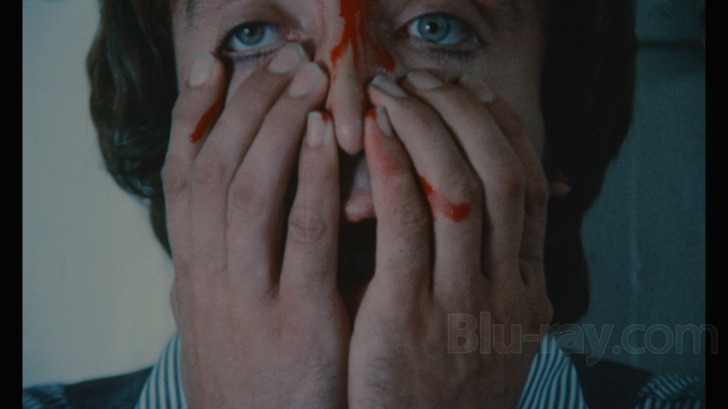
House on Straw Hill's lossless DTS-HD Master Audio Mono track actually reveals very little damage of even transitional differences between the three elements, aside from some very minor pops and cracks. Dialogue and Steve Gray's rather effective score are presented with good if not outstanding fidelity. Kier's English dubbed voice means that his lip movements don't always quite match the words being spoken, but that's a relatively minor issue.
House on Straw Hill Blu-ray Movie, Special Features and Extras 
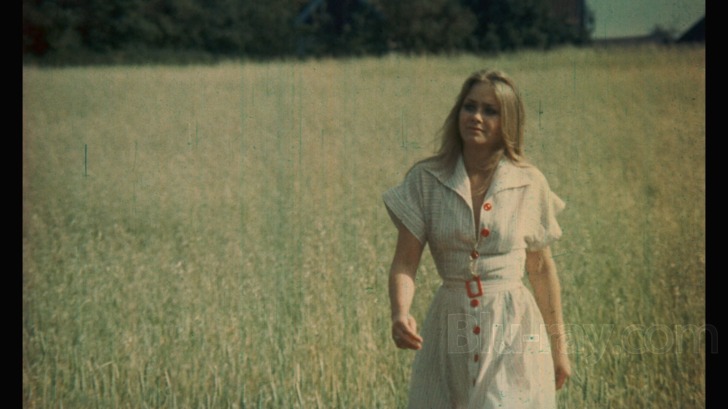
Blu-ray Supplements
- Audio Commentary with Director James Kenelm Clarke and Producer Brian Smedley-Aston. Jonathan Sothcott hosts the two filmmakers in a highly enjoyable commentary that covers a wealth of subjects. There is something just slightly funny, almost in a Monty Python-esque kind of way, in hearing these two obviously upper crust and highly educated men discussing things like latex surgical gloves and exploding carotid arteries in their very cultured British accents.
- An Angel for Satan: An Interview with Actress Linda Hayden (480p; 4:45) is a fantastic if way too brief featurette which includes not just the interview, but some great archival material, including snippets of scenes and promotional materials from her films.
- Trailer (480p; 1:26)
- Ban the Sadist Videos! contains Part 1 (480i; 51:25) and Part 2 (480i; 42:24) of an absolutely fascinating
and first rate documentary about the whole phenomenon of British censorship and cultural outrage in the early eighties,
which this piece ties in to the conservative leanings of the Thatcher years, as well as to the devastatingly poor British
economy, which saw one brief moment of hope when a number of unemployed people found sudden fortune setting up
video rental emporiums.
While the first section examines the work of anti-obscenity crusaders like Mary Whitehouse, there's a more overarching look at governmental interference and the completely arbitrary decisions that were often made. That said, the documentary is also stuffed to the gills with little snippets of these so called "video nasties" and some of them are at the very least highly questionable if not downright objectionable. Mixed in with the more traditional elements like lascivious sexual activity and graphic blood and guts are some really offensive material like a bunch of naked "Jews" (men and women, mind you) cavorting with their Nazi captors. Perhaps sometimes censorship isn't necessarily a bad thing.
The second half of the documentary is a much more introspective but perhaps even more disturbing look at one particular case which involved the brutal murder of a little boy by two other very young kids, a murder which was ultimately blamed on a video (sound familiar?). This half of the piece gives a perhaps less abstract accounting of how those who want to censor such fare point to actual real world occurrences like murder, laying the blame for such horrific acts at the feet of the salacious and/or violent content of the films.
This was obviously sourced from an old videotape, and there are both tracking issues on display as well as what might be termed a "pulsing" appearance, where everything from superimposed titles introducing talking heads to even background objects behind the talking heads tend to shimmer just slightly from moment to moment. - Censors Working Overtime (480i; 10:46) is a decidedly more whimsical approach to some of the same subjects covered in Ban the Sadist Videos! showing that the wor of the BBFC has not ended.
House on Straw Hill Blu-ray Movie, Overall Score and Recommendation 
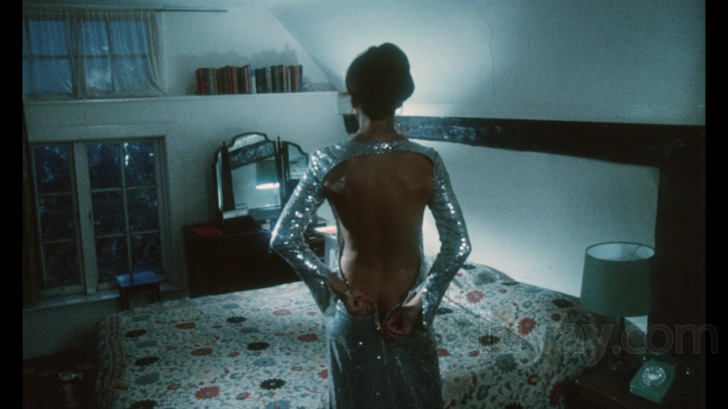
House on Straw Hill is obviously the very model of a niche product, and kudos need to be given to the Severin Film people who have gone to such lengths to reassemble the film and to present it in its complete form. Is it perfect? Far from it, but the fact that Severin has been able to offer an uncut version at all is testament to what a few "cult film lovers" can do. Even those who might not be particularly interested in the actual film may want to get their hands on one of the first 3000 copies of this release, for the bonus DVD documentaries are outstanding and give a really fascinating glimpse into a troublesome period in Britain's history. While the video issue here "is what it is", overall this release comes Recommended.
Other editions
Trauma: Other Editions

House on Straw Hill
Exposé | Trauma | Limited Edition | with Bonus DVD and VHS edition of Expose | Severin Website Exclusive
1976

House on Straw Hill
1976
Similar titles
Similar titles you might also like

Here Comes the Devil
Ahí va el diablo
2012

American Mary
2012

Piercing
2018

I Spit on Your Grave 4K
Day of the Woman
1978

The Strange Color of Your Body's Tears
L'étrange couleur des larmes de ton corps
2013

Rabid 4K
Collector's Edition
1977

The Loved Ones
2009

Black Sunday 4K
The Mask of Satan / La maschera del demonio 4K
1960

The Last House on the Left
1972

The Hills Have Eyes
1977

The Satanic Rites of Dracula
Count Dracula and His Vampire Bride
1973

Martyrs
2008

Hatchet II
Unrated Director's Cut
2010

Deadgirl
15th Anniversary Edition
2008

Suitable Flesh
2023

What Keeps You Alive
2018

Luz
2018

Ma
2019

Pyewacket
2018

Pledge
2018